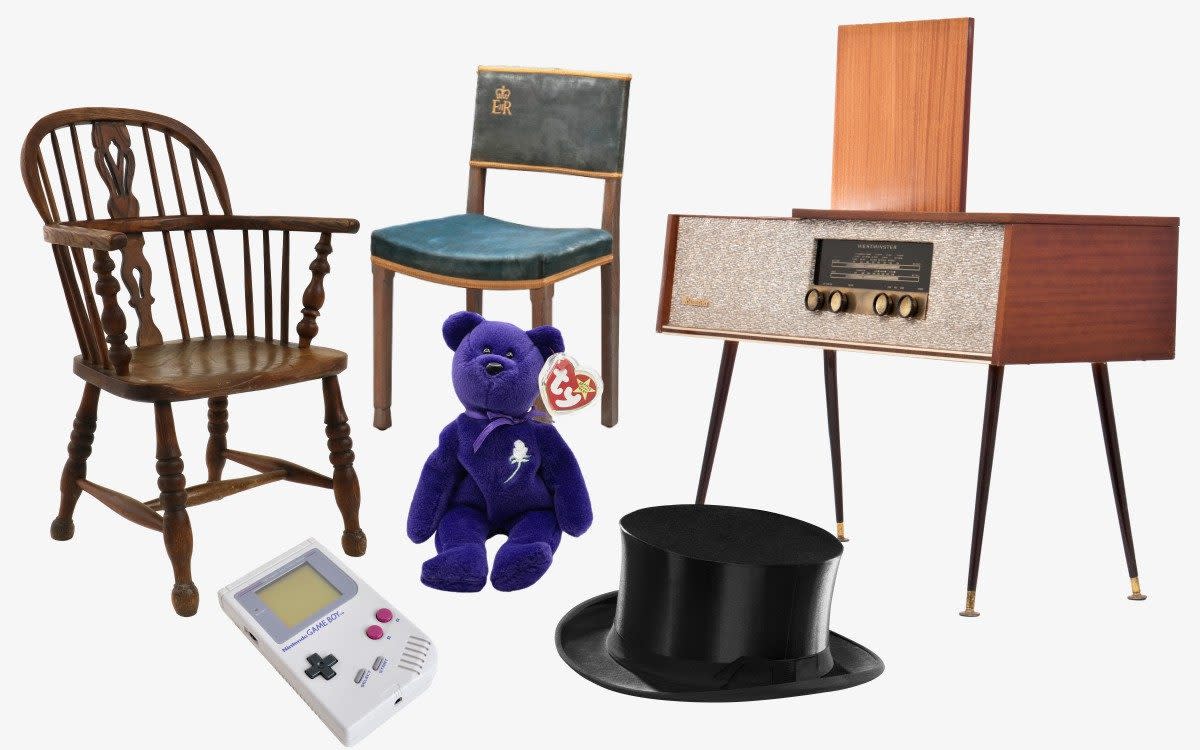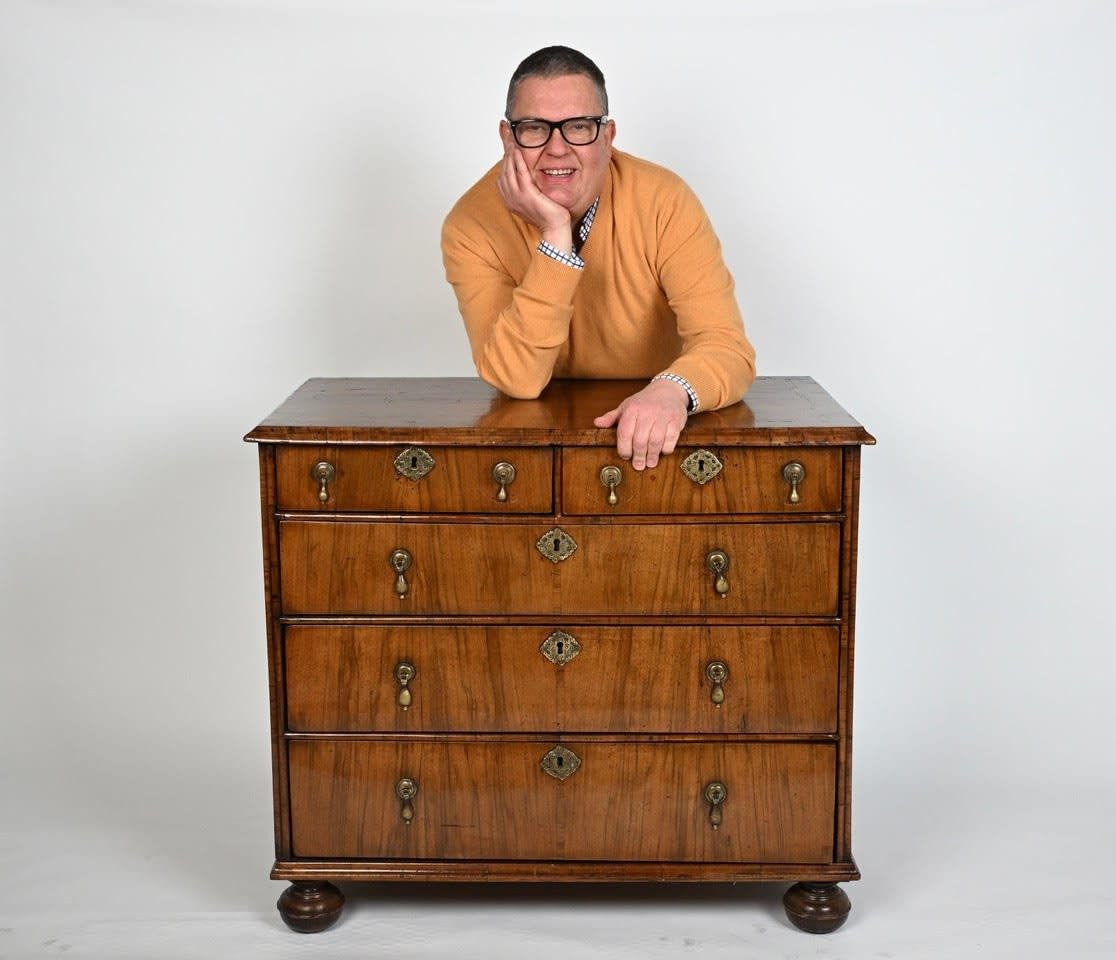Is the toy in your attic a £340,000 antique – or just an old Beanie Baby? Take our quiz

When you’re having a clearout, how can you tell whether you need to take something to the dump or to the auction house? It pays to be careful – the most surprising items can be worth the most.
Tony Johnson, for example, was clearing his elderly aunt’s house in north London and picked up a Chinese-style yellow and blue ceramic vase which he imagined was an imitation. Just in case it was still worth a few pounds, he put it with a pile of mahogany furniture he’d set aside to send to a local auction house as part of a house clearance bundle. Auctioneer Peter Bainbridge checked the base – and spotted an Imperial Reign mark. And the vase, when it came to auction in 2010, sold for a record £53 million, making headline news worldwide. It turned out to be an 18th-century Qianlong-era porcelain, which Chinese art collectors were desperate to see repatriated.
Read on for our tips on how to spot a hidden treasure, and see if you can identify the valuable items in our quiz.
Think before you throw something out
Finding out something you’ve inherited has real material value is far from the realms of fantasy. “It happens more frequently than you’d think,” says Roo Irvine, antiques dealer, BBC TV presenter and owner of Kilcreggan Antiques.
“It’s often the most unassuming piece; that plain brown bowl you might earmark for the charity shop could turn out to be an oriental piece dating back 700 years. That’s why I always tell people, before they give or throw something away, to err on the side of caution. I have people come into my shop all the time saying, ‘Look, I’ve got all this, it probably isn’t worth anything, but can you just look through it.’ Most of the time they’re right and it isn’t going to make the big bucks, but it’s always worth checking – just in case.”
How to check what you’ve got
“The days are gone when the antiques world was a closed shop and people didn’t want to impart knowledge,” says Philip Serrell, auctioneer and valuer at Philip Serrell Auction Rooms in Malvern and a regular on shows including Antiques Road Trip, Bargain Hunt and Put Your Money Where Your Mouth Is. “If you’re in any doubt, go and see your local auction room or dealer. They’re very keen to help people nowadays. Or you can do your own research – look online for similar objects, upload photos and get an idea of value.”
Antiques are not always that old
“That tired-looking 1960s furniture might look dated to you but it’s an interior dream to someone else!” advises Andrew Blackall, a dealer at the Blanchard Collective and the face behind Chairman Antiques.
Serrell explains that retro brands such as G Plan and Ercol are much in demand. “Two sales ago we sold a piece of 18th-century oak furniture for around £300 that 20 years ago would have gone for roughly £3,000. Meanwhile, in the same sale, a G Plan sideboard – exactly like the one that, 20 years ago, I knocked the legs off and converted into a rabbit hutch for my daughter’s bunnies – sold for £600!”
So is brown furniture out?
If mid-century furniture is in, does that mean that antique mahogany is out? No, says Blackall: “If it’s brown, don’t frown! As a dealer, I’m still bold with brown furniture (1680 to 1920) but it has to be special. Names, labels, colour, surface, form and function. Makers’ labels and provenance, a history of who, what and where always adds value, so look for those.”
It’s all about the brand
“When it comes to heirlooms, a brand name is key,” explains Serrell. Thus an Eames chair, a vintage Hermès handbag, a Montblanc pen, a piece by Isokon, will always have value.
“Art glass is very popular at the moment,” explains Blackall, “especially grouping Aseda Glasbruk from the 1950s to 1970s together. It offers a vibrant and colourful display for around £20-£30 a vase. High-value pieces are all Czech, Scandinavian and Murano, but watch out for Indian and Chinese copies... they are so clever! If your heart is set on Lalique, ensure it’s signed and made during Lalique’s lifetime. And let’s not forget Bristol Blue, which is incredibly popular.”
Unexpected finds: cars, beds, tech, pens and… Beanie Babies
So far so unsurprising, perhaps, but other items can fetch more than you might think. “Prices for 1980s coupes by Ford, Vauxhall-Opel and Renault are flying,” says Blackall.
Shabs Kay, from Victorian Dreams in Hampshire, specialises in selling and restoring antique bedsteads and advises that metal beds in brass and iron are popular for their durability and versatility. “Beds made by English manufacturers like R W Winfield, Peyton & Peyton and Hoskins & Sewell are renowned for their exceptional build quality and craftsmanship and command a much higher price tag than their French or Spanish counterparts. The prices of vintage and antique beds can vary enormously according to width and embellishment, such as mother-of-pearl inlays, intricate carvings and metalwork, but they can sell in the region of £1,800 for a simple model to in excess of £10,000 for a fully restored R W Winfield.”
And there is an increasing emergence of technology in sales rooms. “A big area of collectability for the future will be mobile phones,” Serrell says. Very early 1980s “yuppy phones” are already selling for impressive sums online, as are retro computer gaming consoles and games.
“It’s worth doing your own detective work with old tech,” advises Irvine. “One 1990s playstation recently sold for £9,000.”
If you were to end up with one of the 63 Apple 1 computers in existence, you’d be looking at it making around £900,000, but even an original Nintendo Game Boy – manufactured in their millions – could now sell in the region of £500-£700, depending on condition.
You should also take a long hard look at any soft toys before consigning them to the charity shop. Irvine recalls: “I bought in a lot of TY Beanie Babies and someone came in and picked up a purple Princess Diana bear. I thought I’d check it online before I sold it: prices online for the same bear, a limited edition released to commemorate Diana’s death in 1997, ranged between £19 and £340,000 depending on condition. Which just shows that if there’s demand, prices go through the roof.”
And always check out a pen. Montblanc, Caran d’Ache and even Parker pens can hold value, while gold is always good – look for embellishment or limited editions by jewellers.
Blackall says: “A few years ago a lovely couple approached me with a collection of gold pens. Life had been profoundly unkind to them. I sold them on commission and they made £45,000. Some of the pens ended up in America and others in Burlington Arcade.”
The advent of the internet has meant a seismic shift in the reach for any item that can now be brought to the notice of people worldwide. “Where we used to have people at our sales come from a 50-mile radius,” says Serrell, “we now have hundreds of online bidders from California to China.”
The influence of TV programmes
A seismic shift in the industry has been the rise of interior design programmes influencing decor trends. Aesthetic-wise, current trends are for curves – serpentine sofas, De Sede Snake sofas, wishbone chairs and Isokon pieces. Also popular are natural elements in furnishings and textiles, with the earthy-toned paintings of 20th-century British artists like John Piper and potters like Bernard Leach increasingly in favour this year.
“Rugs, too,” says Blackall. “Afghan, Persian and Indian rugs transform a room and are often ignored or forgotten by house clearance firms, but they can be worth thousands.”
What’s going out of fashion
“Edwardian and Victorian glass has to be special to sell well these days,” says Blackall. “It’s really dropped in both price and popularity. Decanters in particular are at an all-time low.” Serrell adds that the demand for ornaments in general is in decline.
“When I started out, people bought collectors’ items, ornaments and nick-nacks. Then they bought cabinets to put their ornaments in. Now that age demographic is dying off and those collectors don’t buy stuff any more. And if you don’t buy stuff, you don’t need a cabinet to put stuff in, so the market for ornaments is on the wane and demand for those display cabinets has gone as well.”

One example of the kind of ornament that would have been in demand for display is from Royal Worcester Porcelain. While anything connected to the Royal family will retain its value, prices for Royal Worcester models of famous racehorses such as Nijinsky, for example, may continue to drop in value, especially as their names fade into the past.”
Just being old isn’t enough.
Keeping it classy
“Ultimately, we shouldn’t get too hung up on the appearance or brand of an item,” says Irvine, “and that’s especially true of heirlooms when tied to social history. Value is about perception. I had this amazing Georgian scrapbook come in recently. It was beautifully written with poems about the effects of the Battle of Waterloo on the soldiers and another about sitting around someone’s death bed in the lamplight. Put to auction this might fetch a few pounds, but then you could have a bidder whose relative died at the Battle of Waterloo who would pay hundreds for it. You never know.”
You never know. Three words that neatly sum up why the mere potential in any heirloom you may be fortunate to inherit makes it instantly exciting.



